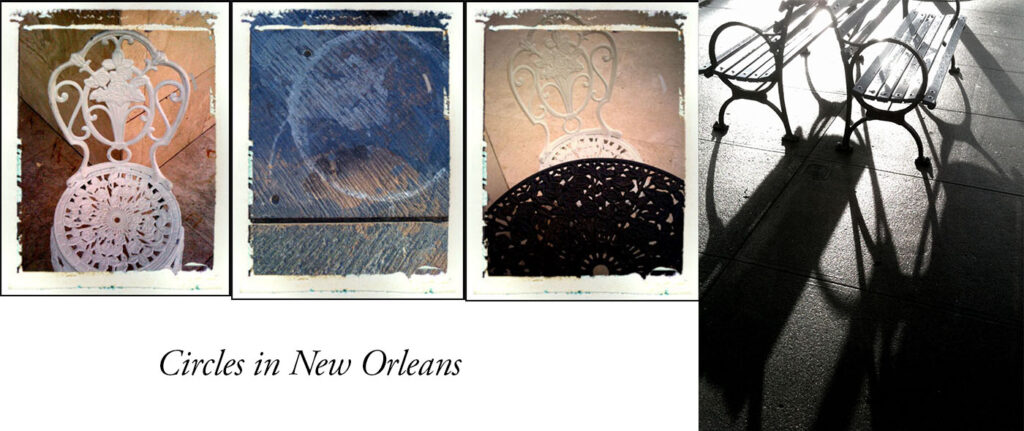The Business Case for the Creative
CREATIVE CLASS MODULE TWO

The Role of a Creative
Every idea, every project, every piece of art goes through a process – a journey of creation.
Think of the creative process as a symphony, each instrument playing its part, together creating a beautiful composition.
- Photography: This is your visual voice. The lens captures more than just images; it captures emotions, stories, and moments in time. It’s the primary way we document reality, giving others a glimpse into our perspective.
- Design: This is the canvas on which stories play out. Design is the frame, the layout, the aesthetic. It takes what is and adds depth, style, and context. It’s the visual language that communicates without words.
- Writing: Here’s your narrative. Words have the power to move, to inspire, to resonate. They can touch souls and spark revolutions. Writing gives voice to our innermost thoughts and paints pictures in the minds of readers.
- Motion: Motion breathes life into static creations. It’s the pulse, the heartbeat. Whether it’s film or animation, motion carries the viewer on a journey, often creating deeper and more visceral connections.
Now, why, you ask, should a solopreneur aspire to master these roles?
Integration is Power: When one mind understands the intricacies of each role, the end creation is harmonized. There’s a singular vision, a unified voice. It’s a holistic symphony instead of isolated notes.
Agility: Being multifaceted means you can pivot with ease. Need a different visual style? You’ve got it covered. Want to narrate your story differently? No problem. You’re the captain of your ship, and you can change course as you see fit.
Market Strength: In a world filled with specialists, a polymath stands out. You’re not just a service provider; you’re a creative powerhouse. Clients love the idea of a one-stop solution. It’s efficient, coherent, and often more economical.
Creative Satisfaction: There’s a joy in taking a project from concept to completion, entirely under your control. The journey, with its challenges and triumphs, becomes deeply personal and immensely rewarding.
Future-Proofing: The world is changing. Fast. Digital platforms evolve, audience tastes shift, and the landscape of media is in perpetual flux. A diversified skill set means you can adapt, innovate, and stay ahead of the curve.
To the solopreneurs out there, I say this: Embrace the journey of learning. Dig into each role, not just as tasks to be done, but as art forms to be mastered. The world doesn’t just need more creatives; it needs more comprehensive creators. People who see the big picture, who understand the dance of creation from start to finish.
Don’t just learn this stuff to not do it, or put it on the back shelf.
This is your opportunity to weave a richer tapestry, where every thread you add brings depth, texture, and color.
So, to the solopreneur poised on the edge of evolution, take the leap.
The world awaits your creativity.
Role of Creatives in Business
Creatives aren’t just decorators.
They’re at the core of the entire system.
Business needs them, indeed it thrives with them, falters without.
1. The Heart of Business
You don’t just make things look pretty.
Your work tells stories.
You shape perception.
You’re a change-maker.
You drive the brand
2. The Spectrum of Roles
- Designer:
They shape experiences, deliver the brand. - Photographer:
Capture more than images. Capture emotions. Stories. Moments. - Motion Graphics
Today stuff moves. You make it move the right way. - Copywriter:
Words are tools. Sculpt messages. Create impact. - Art Director:
You see the big picture. Guide the vision. - Content Strategist:
It’s about the story. How it’s told. Where it’s placed.
3. Job Description: Creative Strategist, XYZ Corp.
Objective:
Shape, inspire, and drive the company’s brand story.
Responsibilities:
- Craft visual and narrative strategies that align with business goals.
- Collaborate across teams to ensure consistency.
- Interpret consumer and market trends.
- Provide creative insights to senior management.
Skills:
- Strong visual and conceptual skills.
- Ability to turn data into stories.
- Strong communication.
- Curiosity. Always.
4. Valuable Creative Skills in Today’s Landscape
Adaptability:
The world changes. Fast. Can you?
Storytelling:
Data’s cold. Stories are warm. We remember warmth.
Collaboration:
It’s a connected world. Be a node, not an endpoint.
Tech-savviness:
Tools evolve. Master them, but remember they’re just tools.
Empathy:
Understand. Relate. Connect.
Your art.
Your craft.
It’s not a hobby, some sort of game.
It’s a business imperative.
In a world of noise, creatives are the signal.
You matter.
More than you might think.
Go create. Go change.
Assignments: Harnessing the Power of Visual Communication
1. “The Silent Ad”
Task:
Design a full-page ad for a fictional product, but here’s the twist:
Use no words. Not one.
Objective:
Discover the raw power of visuals.
What story can you tell without uttering a single word?
Reflection:
Once completed, share with peers.
Can they guess the product’s purpose?
Its audience?
Its brand promise?

An ad for personal tracking software.
2. “Photo Diary”
Task:
For one week, take one photograph daily that captures an emotion, without featuring any human faces.
Objective:
Emotions are complex. Can you convey joy, sadness, anticipation, or any other feeling through just scenery, objects, or abstracts?
Discussion:
End of week, display photos.
Have classmates interpret the emotions captured.

3. “Retro Meets Modern”
Task:
Choose an old advertisement from the 1950s or earlier.
Redesign it for today’s audience.
Objective:
Understand the evolution of visual communication.
What has changed?
What remains timeless?
Review:
Discuss the key differences.
What did you preserve?
What did you change?
Original 1937 Harley Davidson Ad.
Redesigned Harley Davidson Ad.
4. “The Meme Challenge”
Task:
Craft a meme that communicates a complex business concept (like ‘Return on Investment’ or ‘Supply Chain Management’).
Objective:
Memes are the language of today.
Can you make business jargon relatable and viral?
Sharing:
Post memes in a common space.
Which one gets the most engagement and why?

5. “Unboxing Experience”
Task:
Design packaging for a common everyday item (like a toothbrush).
Ensure the unboxing tells a story.
Objective:
Even the mundane can be magical with the right visuals.
Can you elevate a simple product through its packaging?
Feedback:
Swap designs with peers. Document their unboxing.
Did the story come through?
 Ad for consumer product.
Ad for consumer product.
Box for a consumer product.

white box on white background, White box mock up isolated on white background
Your visuals aren’t just visuals.
They’re languages.
Powerful, silent, transformative languages.
Speak. Be heard.
And let the world see your message.
Discussion Ideas: Diving Deep into Visual Communication
1. “The Power of Subtlety”
Prompt:
Think of a brand that relies on minimalistic design. How does simplicity communicate more than complexity in some cases?
Objective:
Unearth the silent strength in visual restraint. When is less truly more?
Starter:
“Apple’s logo: An apple with a bite. Simple, but what does it convey to you?”
2. “Icons and Symbols: Universal Language?”
Prompt:
Discuss iconic symbols like the peace sign, recycling, or Wi-Fi symbols. Why do they work across cultures and languages?
Objective:
Understand the universality of certain visuals. Can one image mean the same thing everywhere?
Starter:
“The ‘thumbs up’ gesture: Friendly approval or cultural misstep?”
3. “Emotion in Color”
Prompt:
Brands pick colors carefully. Red for urgency, blue for trust. How do colors make you feel? Is the emotional impact universal?
Objective:
Explore the emotional depth of color choices in design.
Starter:
“Facebook, LinkedIn, Twitter – they all love blue. Coincidence?”
4. “Visual Clichés: Harmful or Helpful?”
Prompt:
Stock photos of people shaking hands to symbolize partnerships. Is relying on visual clichés lazy, or is there value in immediate recognition?
Objective:
Probe the line between overused visuals and the power of familiar imagery.
Starter:
“That photo of a light bulb to symbolize an idea. Eye-roll or effective?”
5. “The Past Predicts the Future”
Prompt:
Examine old advertising and visual campaigns. What has changed in visual language, and what can it tell us about where we’re headed?
Objective:
Appreciate the evolution of visual communication and predict future trends.
Starter:
“Ads from the 80s: Big hair, bold fonts. Quirky or a mirror to society?”
Visuals aren’t just to be seen.
They’re to be discussed, dissected, and delved into.
Let’s dive. Let’s understand.
After all, the more we discuss, the more we see.
The Multi-Role Creative: Amplifying Business Impact
Creatives aren’t just one-trick ponies.
They’re Swiss Army knives.
Versatile. Adaptable. Crucial.
1. The Fluidity of Today’s Creative
In the age of startups and lean teams, wearing multiple hats isn’t a choice—it’s a necessity.
- Designer + Copywriter:
Craft visuals and sculpt words. Become the complete package for branding. - Photographer + Content Strategist:
Capture the image and curate where it fits. Every shot has its place. - Art Director + Tech Enthusiast:
Guide the vision, but also know the tools. The right tech can enhance art.
2. How Does This Benefit Businesses?
- Resource Efficiency:
One person. Multiple skills. Saves time. Reduces costs. - Consistency:
The more roles you play, the more unified the end result. Cohesion in brand voice and visuals. - Adaptability:
Markets shift. Being versatile means businesses can pivot smoothly with the changing tides.
3. The Challenges (And How to Overcome Them)
- Burnout:
Juggling roles is tough. Solution? Continuous learning and time management. - Depth vs. Breadth:
Jack of all trades, master of none? Not necessarily. Passion and practice can defy this. - Communication:
More roles mean more responsibility. Keep channels open. Feedback is gold.
4. The Future for Multi-Role Creatives
The trend isn’t slowing down.
Businesses want value. Creatives deliver.
But it’s more than just multitasking.
It’s about understanding the holistic picture.
So, to the creatives out there:
Don’t box yourself in.
Expand. Explore. Evolve.
Your art isn’t confined to a canvas or a lens or a pen.
It’s as expansive as your will to learn, adapt, and create.
Remember:
Businesses don’t just want artists.
They want maestros.
Be one. Shape visions. Shape futures.
What You’ll Learn
Key Takeaways:
– Creatives aren’t just decorators. They’re at the core of the entire system.
– Business needs them, indeed it thrives with them, falters without.
2. The Spectrum of Roles:
– Designer: They don’t just choose colors. They shape experiences.
– Photographer: Capture more than images. Capture emotions. Stories. Moments.
– Copywriter: Words are tools. Sculpt messages. Create impact.
– Art Director: You see the big picture. Guide the vision.
– Content Strategist: It’s about the story. How it’s told. Where it’s placed.
3. Job Description: Creative Strategist, XYZ Corp.:
– Objective: Shape, inspire, and drive the company’s brand story.
– Responsibilities: -Craft visual and narrative strategies that align with business goals. -Collaborate across teams to ensure consistency. -Interpret consumer and market trends. -Provide creative insights to senior management.
– Skills: -Strong visual and conceptual skills. -Ability to turn data into stories. -Strong communication. -Curiosity. Always.
4. Valuable Creative Skills in Today’s Landscape:
– Adaptability: The world changes. Fast. Can you?
– Storytelling: Data’s cold. Stories are warm. We remember warmth.
– Collaboration: It’s a connected world. Be a node, not an endpoint.
– Tech-savviness: Tools evolve. Master them, but remember they’re just tools.
– Empathy: Understand. Relate. Connect.
5. Assignments: Harnessing the Power of Visual Communication:
– “The Silent Ad” ➔ Discover the raw power of visuals without using any words.
– “Photo Diary” ➔ Capture emotions through scenery, objects, or abstracts.
– “Retro Meets Modern” ➔ Redesign an old advertisement for today’s audience.
– “The Meme Challenge” ➔ Craft a meme that communicates a complex business concept.
– “Unboxing Experience” ➔ Design packaging that tells a story.
6. Discussion Ideas: Diving Deep into Visual Communication:
– “The Power of Subtlety” ➔ Minimalistic design and simplicity in communication.
– “Icons and Symbols: Universal Language?” ➔ Symbolism and its cross-cultural impact.
– “Emotion in Color” ➔ The emotional impact of colors and its universality.
– “Visual Clichés: Harmful or Helpful?” ➔ Visual clichés and their recognition value.
– “The Past Predicts the Future” ➔ Evolution of visual communication and future trends.
7. The Multi-Role Creative: Amplifying Business Impact:
– In the age of startups and lean teams, wearing multiple hats isn’t a choice—it’s a necessity.
– Designer + Copywriter: Craft visuals and sculpt words. Become the complete package for branding.
– Photographer + Content Strategist: Capture the image and curate where it fits.
– Art Director + Tech Enthusiast: Guide the vision, but also know the tools.
– Resource Efficiency: One person. Multiple skills. Saves time. Reduces costs.
– Consistency: The more roles you play, the more unified the end result. Cohesion in brand voice and visuals.
– Adaptability: Markets shift. Being versatile means businesses can pivot smoothly with the changing tides.
8. What You’ll Learn:
– Visual communication is crucial in today’s economy as visuals have the power to capture attention and engage audiences.
– The core principles of visual communication include simplicity, balance, focus, and consistency.
– Visual communication plays a significant role in various aspects of business, such as branding, marketing, product design, and social media.
– The tools of the trade for visual communication include software like Photoshop, Illustrator, Lightroom, and Canva, as well as having the right mindset.
– Visual communication projects can include photography, design, motion, and digital services, with the goal of challenging and transforming participants.
– The module includes assignments that focus on simplicity, balance, directing the eye, consistency.
9. Visual communication and brand perception:
– Visual communication plays a significant role in shaping the perception of a brand
– It builds trust through consistency and tells stories without words
MODULE 2
RESOURCES
FACEBOOK GROUP
Portfolio Ideas:
A Travel Story
A Product Explanation
Teach something small
Make a portfolio for a friend
Assignment Ideas:
Create a small, 4-page brochure.
Use InDesign or Photoshop, not Canva.
The client can be any type of industry.
Lorem Ipsum
Use this for text holding and visualizing fonts. It is nonsensical latin, and it gives us a chance to see what the copy will look like.
WHAT TO WORK ON THIS MONTH
You are in the first module group (1-6) and we are laying the foundation for the rest of the class.
This is the time to begin working on software and tech you may not be familiar with. There is a list above, and there will be many more added to it. You certainly do not have to know all of them, they are suggestions for different genres of work.
For instance, for video, you could choose Premiere, DaVinci, iMovie, Capcut, Canva, Adobe Express, Pixelmator or whatever product you are using and comfortable with.
If you are NOT familiar with making videos, take a look at what you want to do and where you want to be in a year with your video.
For instance, you want to do Facebook / Instagram video work for small and medium businesses.
My suggestion would be Canva, Adobe Express, Pixelmator, and Capcut.
If you want to be doing longer-form videos like training or documentary videos, I would suggest DaVinci Resolve, Premiere, or Final Cut Pro. These have higher learning curves but are certainly worth learning.
If you are looking at animating graphics, the big daddy in that arena is After Effects. It is not an easy program, but you can become proficient in a few months.
That said, you can animate text and graphics at Canva, Adobe Express, Pixelmator, and Capcut.
The same with all of the different work that you do.
If you are not a Photoshop user and don’t know if you need that much power, try Pixelmator. A really amazing little program that handles RAW files, color correction, sharpening, and almost anything you need to do.
THIS MONTH…
Get used to some new software that you are not familiar with.
